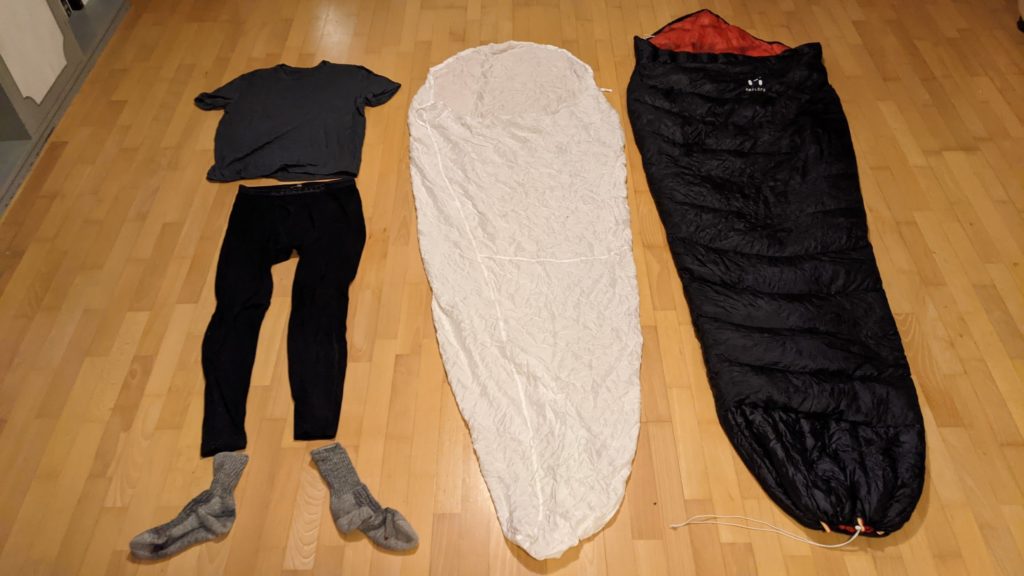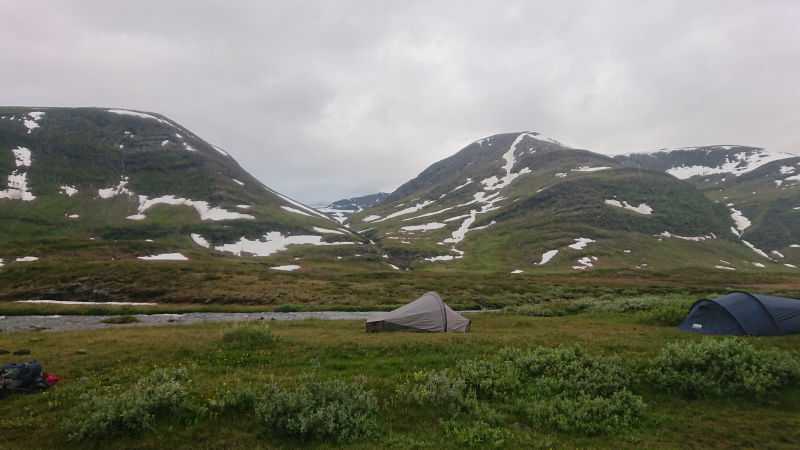“Em, you get undressed, you climb inside, and you go to sleep. How hard can it be?” – you think. Well guess what smarty pants, for the most part you are er, right. But despite having used sleeping bags for years I have found there are a few things I didn’t know. Since I came to Sweden I have done a lot more camping, much of it below 10C, some of it in freezing winter conditions, so I have had to learn fast!
Personally speaking when I am hiking and camping my biggest worry for discomfort, other than spending the day getting rained on, is not being able to sleep because of cold. After some research, some practice, and some trial and error I now know what I can expect from a sleeping bag, how much I can trust it, and how to get the maximum amount of comfort.
Three things I have learned are:
- What the temperature ratings for sleeping bags mean
- How to get the bag to actually deliver on those ratings
- And what else you can do to have a good night’s sleep
Temperature Ratings
Sleeping bags always used to have some sort of temperature rating on them. But it is only in recent years that these have been standardised. The European Standard has been superceeded by the ISO one which delivers pretty much the same number. All the reputable sleeping bag manufacturers now use this standard.
I will use my Haglöfs LIM +1 bag for this demonstration…
This bag, like any you get now days, has a temperature rating made up of three numbers:
- Comfort: +6°C which is the external temperature that a woman will sleep in a relaxed position. So the “cosy” temperature.
- Lower Limit: +1°C the temperature a man can sleep at when curled to conserve heat. The “practical” temperature.
- Extreme: -13°C the extreme temperature a woman can sleep at without getting hyothermia. If you are using the bag at his temperature, you are probably in trouble, and you are almost certainly not having a good time.
The ratings are good because they take into account the differences between men and women. And they give you a realistic idea of what a sleeping bag can help you cope with. But achieving a good sleep at those comfort and lower limit temperatures doesn’t come automaticatlluy. Some work is needed!
Getting to the rated temperatures
When I first got my new down bag I was surprised that I was feeling cold and not sleeping well even at 5-10°C. At first I was thought the problem was the bag – down bags lose effectiveness if not stored correctly. Maybe it was that. Or was the bag defective? It took me a while to learn that the sleeping bag was fine, the problem was me.
Hitting the tempeartures given by the ISO ratings assumes a few things. To get those numbers you need to:
- Use a sleeping bag liner. As well as helping keep the bag clean, it gives you a little bit more thermal margin.
- Dress properly – you should to be wearing a single thermal base layer. I keep a wool top and leggings just for sleeping. And if it is cold I will have warm dry socks, and sometimes a hat. The thickness of what you wear will depend in how cold it will be and how comfortable you want to be!
- Cover your head. The factoid that you lose half of your heat through your head is not true. But if your head is sticking out of the bag it make you a lot cooler. Make sure the bag is pulled over your head and the drawstrings pulled to keep it there.
- You will also need a sleeping pad under you, and wind protection – either a tent or a bivvy bag, or even just a wind shelter.
It was this learning to layer inside the bag that really made a difference for me. That and ensuring that my head was not leaking heat.

What else you can do
Two other things to add to the list. The first is touched on above – you need a sleeping mat. I know a lot of people use one to try and get a soft, comfortable surface to sleep on. But the primary purpose is to provide thermal insulation between you and the ground. I learned recently that there is work underway to come up with a standard for how mats are used (the “R” rating). It is not ready yet, though manufacturers are already providing some ratings. And I was able to use that information when I was going on Kungsleden to change the mat I usually use to my more thermally insulating Thermarest ultra-lite mattress.

And secondly, a tip from half Scot-half Swede, former soldier in the Swedish army… When he was doing his winter training in the north they taught them that sleeping bags do not make you warm. They just keep you warm. If you are cold when you get into the bag then you will have a lot of difficulty warming up. Instead Swedish soldiers are trained to put on all their clothes and run around, or do star jumps. Then undress quickly, and jump into the bag while you are nicely warm!
All the things I had learned were put into practice when I went to do Kunglesden last summer. I had 110km of hiking, and about 3 nights of camping to do. the forecast was for about 6C at night. I was a little nervous going north, as I didn’t want to be cold and sleepless on the trip.
I had my LIM +1 bag, a silk liner, the ultra-lite Thermarest, a tent, and some wool clothing for evenings. I slept soundly every night. Certainly at least as well as the two nights I spent in huts!

A more severe test was a came a few weeks ago at the end of October when I went hiking and camping in an early cold snap. A friend and I were staying in a wind shelter with temperatures down -2°C. As the temperature was below the the rating of the LIM bag, I supplemented it with second older bag outside it (I have tested that combination down to -8°C on my balcony in the snow)! Before going to sleep I warmed myself at the fire. And with the bivvy bag on the outside, and the wool thermals on me it was another sound night’s sleep.

I first started camping in the wild in the mid 1990’s. So it has only taken me 25 years to figure out how to use my sleeping bag!
Recent Comments